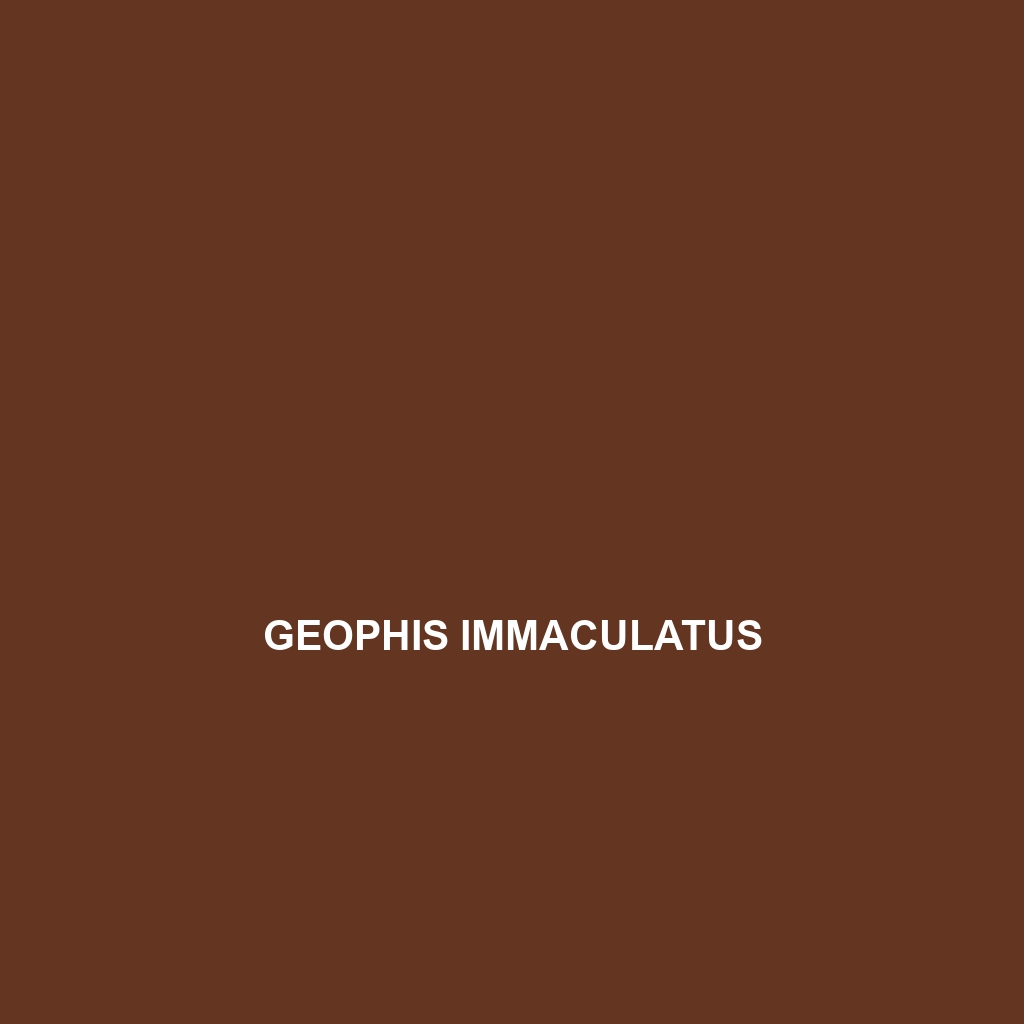Common Name
Geophis hoffmanni
Scientific Name
Geophis hoffmanni
Habitat
Geophis hoffmanni is primarily found in the tropical regions of Central America, particularly in countries like Costa Rica and Panama. This species thrives in diverse environments, including lush rainforests where dense foliage provides ample cover and moist conditions. Additionally, it can be found in temperate forests and areas characterized by rocky outcrops. The climate in these regions is generally humid and warm, with significant rainfall contributing to the rich biodiversity. The presence of leaf litter and decaying organic matter supports its habitat, making it ideal for survival and foraging.
Physical Characteristics
The Geophis hoffmanni exhibits distinct physical features that make it recognizable. Adult individuals typically measure between 30 to 50 cm in length, presenting a slender and elongated body shape. The coloration ranges from shades of brown to gray, often featuring darker banding patterns that help in camouflage against the forest floor. A unique aspect of this species is its smooth scales, which reduce friction and assist in burrowing into the soil. The head is slightly flattened, with small, beady eyes that indicate its primarily nocturnal lifestyle, helping it navigate its environment effectively even in low-light conditions.
Behavior
Geophis hoffmanni shows fascinating behavioral traits, particularly its nocturnal habits. It emerges during the night to hunt and forage for food, utilizing its keen sense of smell to locate prey. Socially, this species tends to be solitary, often found alone except during mating season. Their behavior includes burrowing and hiding in leaf litter, which serves as effective camouflage from predators. Mating rituals consist of elaborate courtship displays, where males may engage in a series of movements and scent trails to attract females. This form of social interaction is brief and primarily exists during the breeding season.
Diet
The diet of Geophis hoffmanni is predominantly insectivorous, making it a carnivore. It primarily feeds on a variety of invertebrates, including earthworms, beetles, and other small arthropods. Its hunting behavior involves probing the soil with its snout, detecting vibrations, and sometimes using its tongue to sense chemical cues. This species may also consume small amphibians or other reptiles occasionally. The ability to locate food in the leaf litter and underground showcases its adaptations as a burrowing specialist.
Reproduction
The reproductive cycle of Geophis hoffmanni is marked by a specific breeding season in line with environmental cues, typically occurring during the rainy season when food resources are abundant. After a courtship display, females lay a clutch of 3 to 12 eggs, which they bury in moist soil to maintain humidity levels. The gestation period lasts around 60 to 90 days before the eggs hatch. Newly hatched young are fully formed and independent, immediately beginning their search for food. Parental care is minimal, with females relying on the protection of the nesting environment for their eggs.
Conservation Status
The conservation status of Geophis hoffmanni is currently classified as Least Concern. However, habitat destruction due to deforestation and land conversion for agriculture poses potential threats to their populations. Conservation efforts are essential to monitor their habitats and implement protective measures to safeguard this species. Awareness and education about the importance of maintaining biodiversity in Central American ecosystems are pivotal in ensuring the survival of Geophis hoffmanni.
Interesting Facts
One unique fact about Geophis hoffmanni is its remarkable ability to blend into its surroundings, allowing it to evade predators successfully. Its smooth, glossy skin not only serves a functional purpose but also helps to reflect light, further aiding in camouflage. In addition, these snakes produce a mild venom, which is effective in subduing their prey but is not harmful to humans.
Role in Ecosystem
Geophis hoffmanni plays a vital role in the ecosystem as a predator of various invertebrates, contributing to the balance of the soil-dwelling species population. By preying on insects and other small creatures, this species indirectly supports plant health and growth, as it helps control herbivore populations. Its presence in the environment also indicates a healthy ecosystem, as stable populations of snakes often reflect the overall biodiversity of the area.
